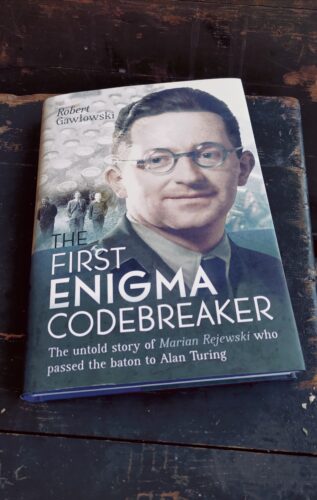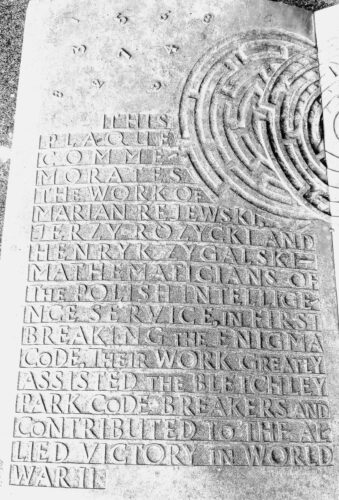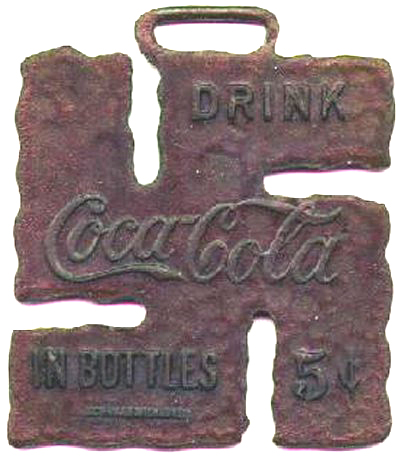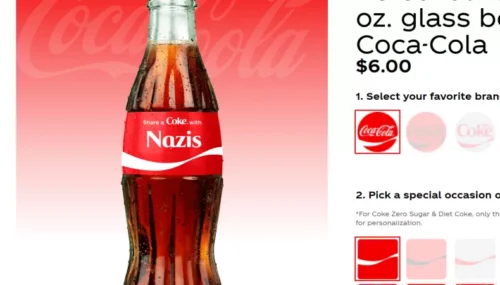Nobody really, truly believed a “severely impaired” (couldn’t see in right or left eye) and basically ignorant loner such as the Dutch Van der Lubbe could have burned an entire German government building down quickly and single-handedly.
The Communists had thrown him out of the party and denied even a basic role. He was fired from his jobs. He quarreled with police and was jailed. Not the sort of guy who could put any kind of plan together, let alone represent others, yet also a guy who wouldn’t give up trying.
He became attractive to historians for decades in probably the same way he became attractive to the Nazis in 1933 thinking it would be easy to game historians.
People have subscribed to an easy scapegoat theory about Van der Lubbe simply because he carried all the hallmarks of a crime mule; someone who would fall easily into dangerously dumb situations and in no way be able to defend himself against even the most outlandish accusations.
Those subscriptions apparently are changing, finally.
“I used to subscribe to the consensus view that Van der Lubbe was the sole actor behind the arson attack, even if some of the scientific evidence made me a little uneasy,” said Sir Ian Kershaw, whose two-volume Hitler biography established him as one of the leading authorities on the Nazi party.
“In recent years I have become more open-minded about the authorship of the fire, though the alternative scenario has yet to be established,” he said, voicing scepticism that even a toxicological examination of Van der Lubbe’s remains could settle the debate once and for all.
The exhumation’s organiser, Alfred Otto Paul, is more optimistic. While he could not comment on the finding until the completion of the pathology report, he said, he promised that the findings would be momentous. “History as we know it will have to be rewritten.”
Scientific evidence is like kryptonite to Nazis. The article also tries to raise a question:
Carter Hett said the “balance of probability” pointed to the fire having been set by a squad of men from the Nazi’s paramilitary Sturmabteilung (SA) wing…. How exactly these men would have managed to recruit a committed communist for their cause, however, remains unclear. “It is true that we are lacking any evidence as to how a link-up between Van der Lubbe and the SA could have come about,” Carter Hett said. “It does still seem insane that they would have picked this unstable, almost blind young man as the fall guy.”
Insane? Not at all. The SA lied to him and about him, as if he were just an unwitting gullible pawn. Journalists cautiously wrote in 1934 of exactly such probabilities.
…[it’s just a theory that] Nazis employed penniless van der Lubbe to help them set the fire, promising to save his neck by a Presidential reprieve and to reward him handsomely for hiding their identity and taking the whole blame in court [increasingly detached from reality].
A mostly blind, desperate and easily fooled guy had been failing miserably several times at lighting government buildings in Berlin on fire. He surely was noticed and opportunistically used by Nazis if not completely owned by them, in the same way any sloppy brazen arsonist raises attention in a police state.
A more real question is how he moved from being the guy so blind and incompetent he couldn’t successfully light anything on fire to… completely alone generating such a huge blaze of unparalleled widespread acceleration (exactly the kind of arson plans the Nazis became infamous for later) that he wasn’t in any way part of someone else’s work?
Of particular note is how Van der Lubbe abruptly was transformed from a random and loudmouthed incompetent loner seeking social entry — saying he would never accept suicide and wouldn’t stop jumping at dumb ideas with low chance of success — into the exact opposite person.
Van der Lubbe was said to have gone [in the hands of German police] from being healthy and energetic to being apathetic and unable to wipe his own nose. Journalists at the time of his trial suggested he could have been given scopolamine, which has been dubbed a ‘truth serum’ for its alleged ability to get those who are given it to reveal information.
Previously after police handled him in jail he had come out even more energized and ready to fight. This time? Something very, very different happened in the process of being interrogated and incarcerated for the very thing he went into so vigorously.
If he was so proud of resisting before, so full of independent energy and ready to act alone on personal crazy plots, why would an unbelievable success of his attack then collapse him into a lifeless, empty soul unable to function at all, sleeping or laughing away his trial begging for certainty in a quick death?
Most likely his sad hung head, his lethargy and inability to recognize reality, was from an intentional effort to abuse him into presenting the face of a “defeated working class“.
And also notable was Hitler’s pronouncements at this time:
‘At least we have not set up a guillotine,’ Hitler said in a news-paper interview at the end of 1933. ‘Even the worst elements have only needed to have been separated from the nation.’
Van der Lubbe then was sent on Hitler’s orders straight to a guillotine in January 1934.
During the night a guillotine was hastily knocked together in the prison courtyard. […] Commented a high Nazi official in Berlin, “It was a concession that he was not hanged. The [retroactive] law specifies hanging for political arson but hanging is a shameful death. Van der Lubbe was spared that.”
How lucky to not use the guillotine. How lucky to use the guillotine. Whatever is convenient for Nazis.
Surprised? The thing Hitler said in 1933 was “at least” not set up was quickly set up, to be known as the 1934 preferred and standard Nazi execution method. Then guillotines were ordered by Hitler to scale into every Nazi prison, killing over 16,000 people in the following years.
In many ways you have to read whatever the Nazis said as intentional inversions of what they knew and believed — calculated destruction that erased trust in anything said or written, in order force everyone to go to Hitler and only Hitler for the latest version of his twists and turns. As the infamous Nazi saying went…
If you cannot recognise the will of the Fuhrer as a source of law, then you cannot remain a judge
Historians seemingly are standing by for what comes next, as they begin to withdraw from low cost subscriptions to the forever flimsy Van der Lubbe story.







